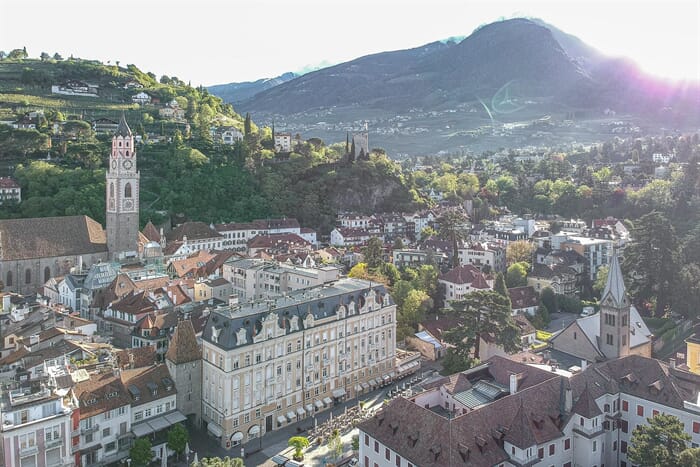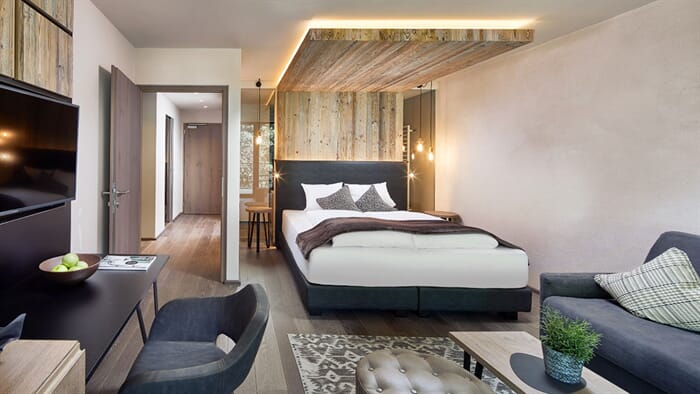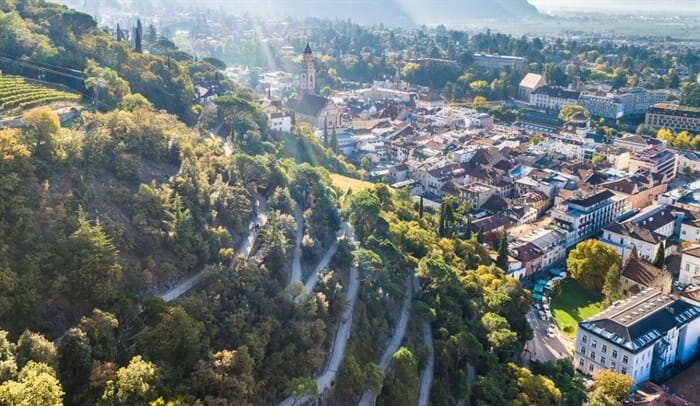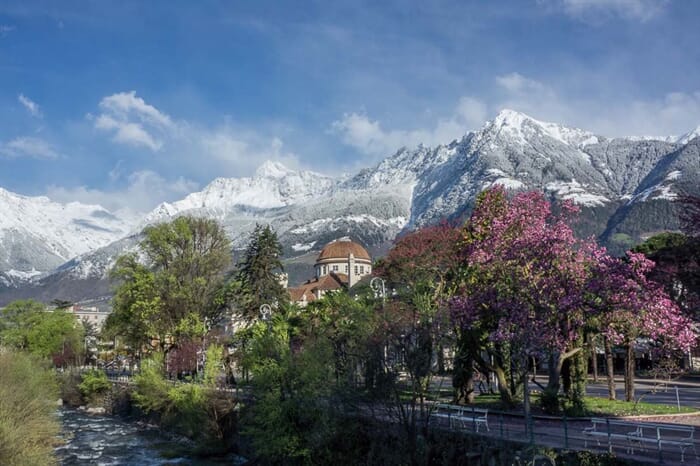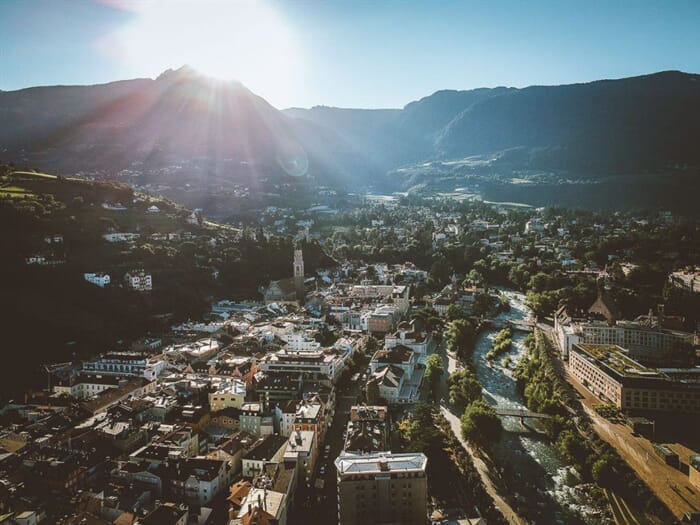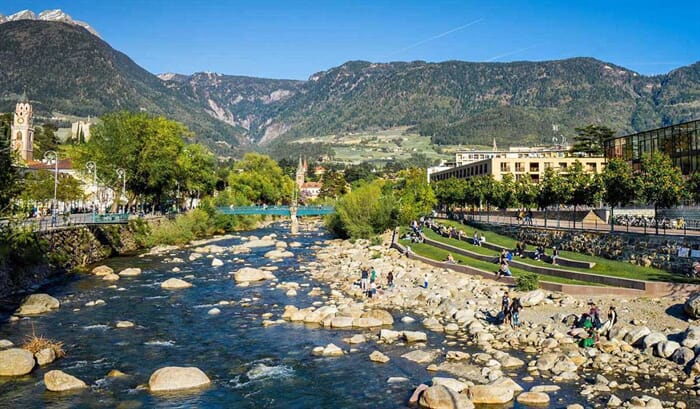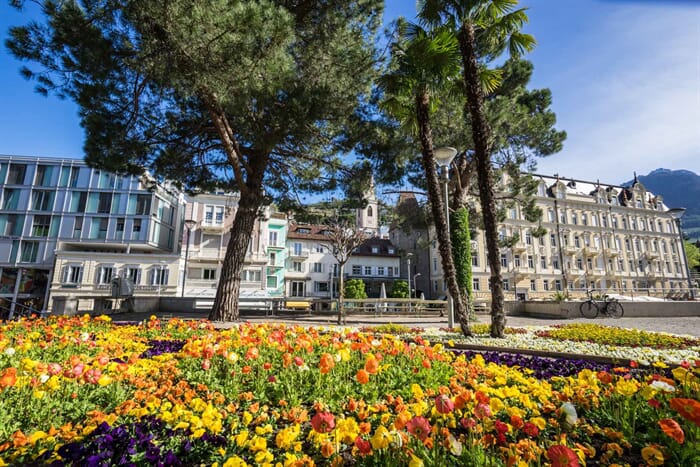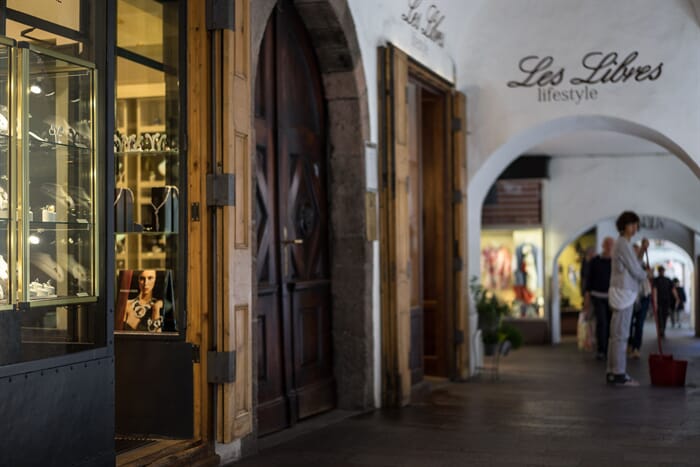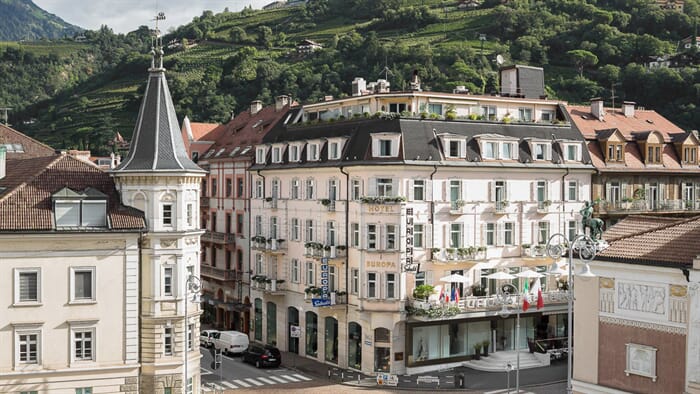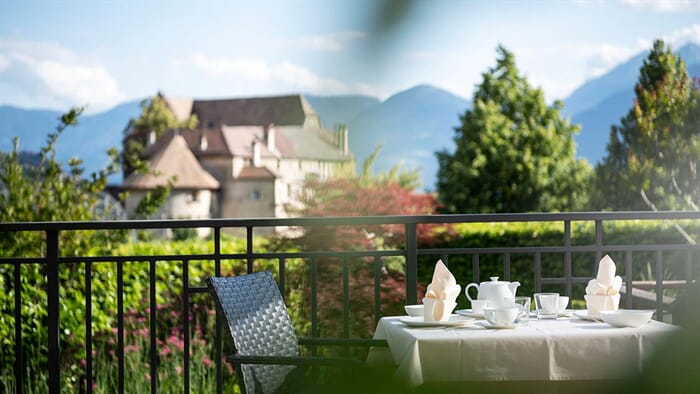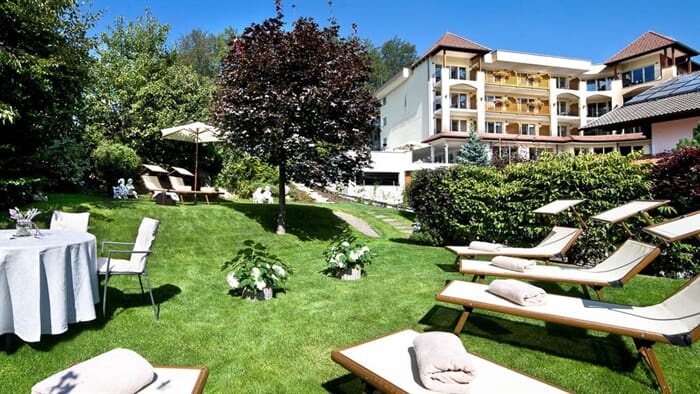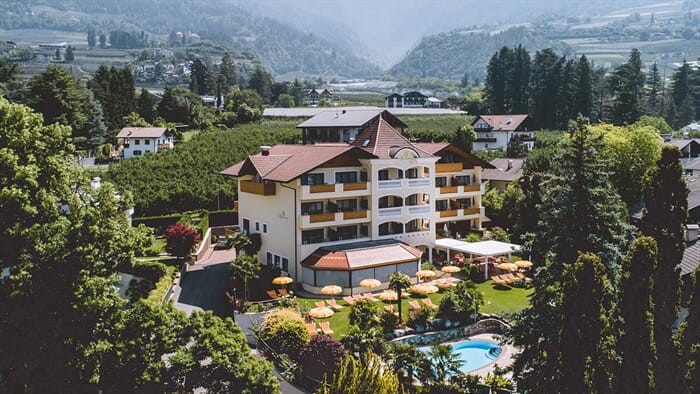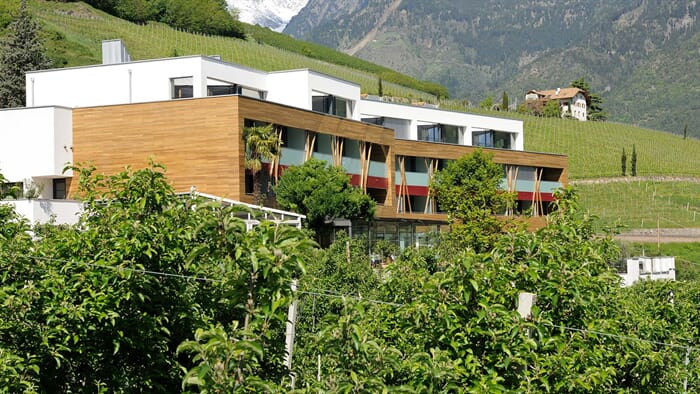16 extraordinary curiosities in Merano
Much of this site is about highlights, tourist attractions and modern pleasures. This article is about less known, but very interesting curiosities, which like to lie hidden, but are also often in front of everyone's eyes, without being noticed as such.
This article, however, is about the extraordinary, but also about curiosities that you can find only in Merano. The long and eventful history of our city serves as a breeding ground for all these curiosities, because only from a long and eventful history can such unique myths, facts and contemporary witnesses arise. The best thing about it: all elements of this enumeration can still be visited in some form today and offer an interesting contrast away from the mainstream.
The Sissi cake
Touriseum
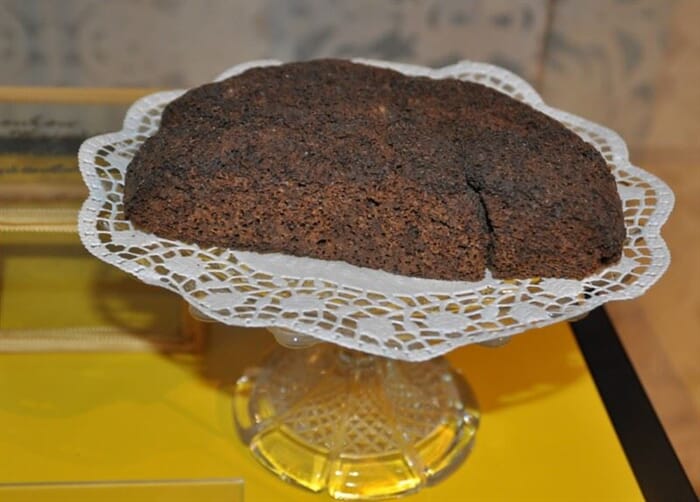
A cake from 1897? Which still looks edible? This would almost be newsworthy in itself. But this particular cake, on display in the Touriseum at Trauttmansdorff Castle looks back on a very special history!
On the occasion of her fourth stay in Merano, Empress Sissi made a trip to Nalles, where she stopped at the Restauramt Sonnenwirt. In the greatest haste the landlady baked this cake, of which the empress ate a thin slice. The rest of the cake remained untouched and was given to the Touriseum in 2015, where it can be admired today.
On the occasion of her fourth stay in Merano, Empress Sissi made a trip to Nalles, where she stopped at the Restauramt Sonnenwirt. In the greatest haste the landlady baked this cake, of which the empress ate a thin slice. The rest of the cake remained untouched and was given to the Touriseum in 2015, where it can be admired today.
A village well saga
Maia Alta
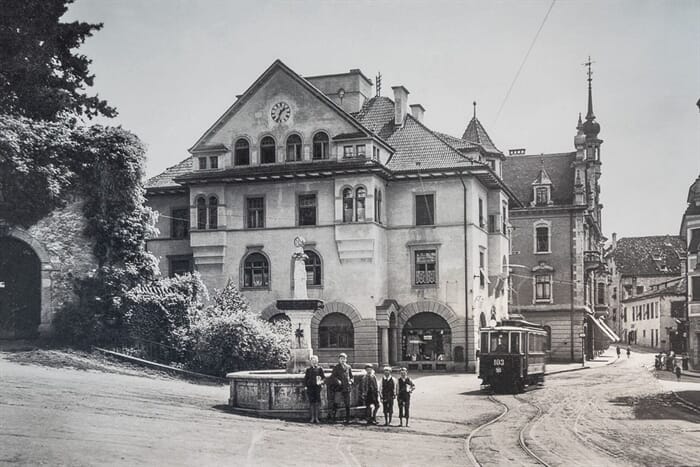
The fountain square of Obermais looks back on an eventful history. This has always been considered the center of the now green villa district of Merano. The history of the landmark of the fountain square is the village fountain, which was first mentioned in a document in 1495, is no less eventful. In 1889 it was rebuilt in marble, to make way for a granite fountain in 1970. This in turn had to make way for a new fountain in 2007, which, resembling a sarcophagus, disfigured the fountain square rather than enriching it.
Quickly a citizens' committee was formed, which, thanks to many donations, gave the fountain square back its new, beautiful village fountain in 2015. What few people know: right next to the new fountain, to the right of the gate to Reichenbach Castle, behind a tall shrub, everyone can still see the stone column of the very fountain that provided cool and fresh water here from 1889 to 1970.
Quickly a citizens' committee was formed, which, thanks to many donations, gave the fountain square back its new, beautiful village fountain in 2015. What few people know: right next to the new fountain, to the right of the gate to Reichenbach Castle, behind a tall shrub, everyone can still see the stone column of the very fountain that provided cool and fresh water here from 1889 to 1970.
Door in gate
Princely castle
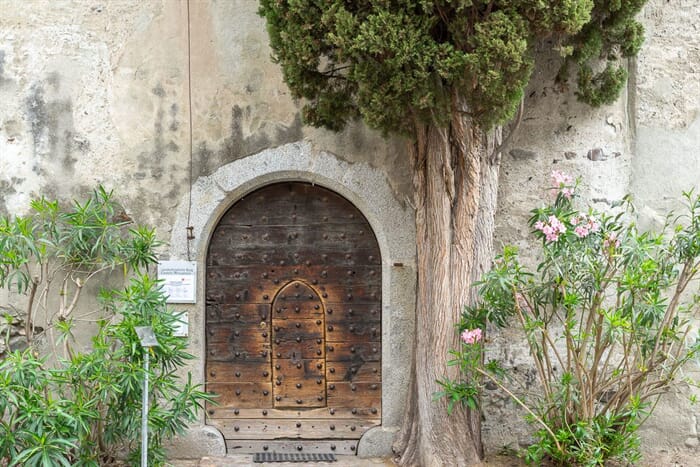
The entrance of the princely castle consists of a large gate and a manhole. Because only one person at a time can be allowed into the castle through this narrow gate, which is only as wide as a man, this made it easier for the guards to control access in the Middle Ages.
Today, the princely castle functions as a museum - and as a location for weddings. Malicious tongues claim that the loophole is now used to make it more difficult for those unwilling to marry to escape from the registrar. As a side note, it is said that during his stays at the princely castle in the 15th century, Duke Sigmund "the Rich in Coins" fathered a large number of his 50 (!!) illegitimate children.
Today, the princely castle functions as a museum - and as a location for weddings. Malicious tongues claim that the loophole is now used to make it more difficult for those unwilling to marry to escape from the registrar. As a side note, it is said that during his stays at the princely castle in the 15th century, Duke Sigmund "the Rich in Coins" fathered a large number of his 50 (!!) illegitimate children.
A church tower with 7 clocks
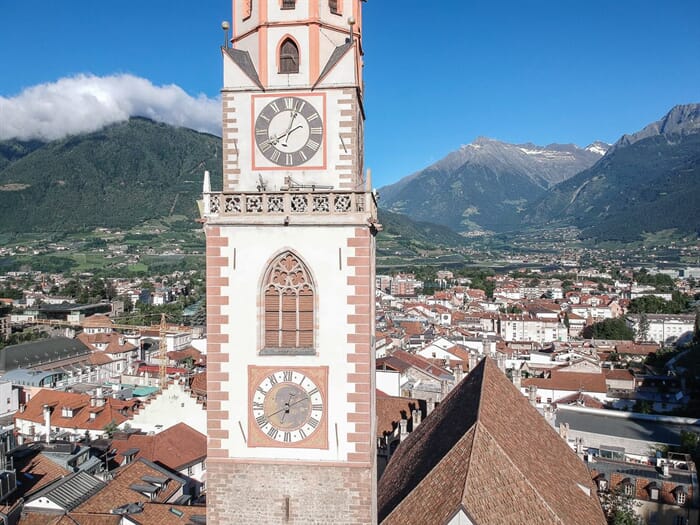
The steeple of the Merano Church has 7 large steeple clocks! In the 18th century, the houses in the old town of Merano grew more and more in height and a clear view of the existing four clocks was no longer given in many places.
Without further ado, three new clocks were installed about 8 meters higher on the sides facing the city. Problem solved, even today we are happy in Merano about these 7 clocks, which are now accurate to the second thanks to modern technology.
Without further ado, three new clocks were installed about 8 meters higher on the sides facing the city. Problem solved, even today we are happy in Merano about these 7 clocks, which are now accurate to the second thanks to modern technology.
Napoleon's death mask
Merano Municipal Museum
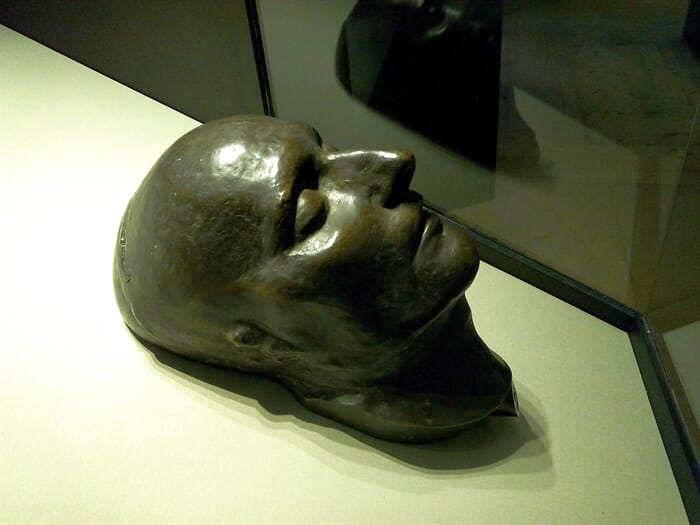
It is significant that one of the only five original death masks of Napoleon is located in Merano. After all, it was Napoleon himself who, after the last peasant uprisings in the autumn of 1809 (such as the battle of the Küchelberg above Merano, which was lost by his army), gained control of the Tyrol Region. This bloody rule ended already anno 1814 after a devastating defeat against the Austrians.
You can see this death mask in the Merano City Museum, the other four copies are in the Louisiana State Museum in New Orleans, in the Hotel des Monnaies in Paris, in the Napoleonic Museum in Santiago de Cuba and in the Athenaeum of Philadelphia.
You can see this death mask in the Merano City Museum, the other four copies are in the Louisiana State Museum in New Orleans, in the Hotel des Monnaies in Paris, in the Napoleonic Museum in Santiago de Cuba and in the Athenaeum of Philadelphia.
Merano's air raid shelter
Via Galilei
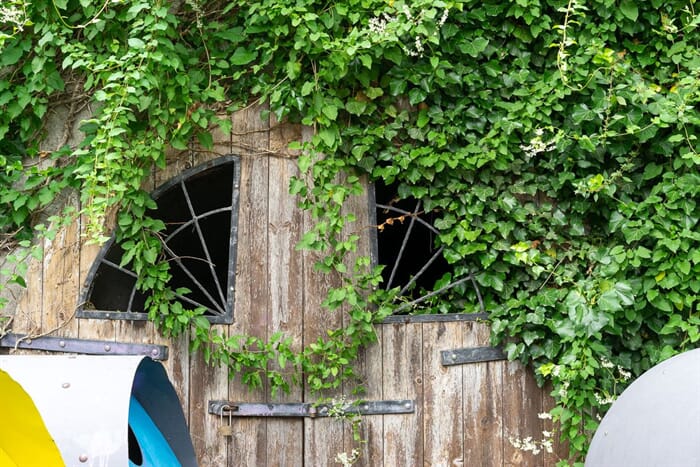
In the central Gailileistraße, only a few steps away from the chairlift Merano - Dorf Tirol and from the Prince's castle, hidden behind containers for used glass and paper, is a special Merano curiosity: the entrance to the only air-raid shelter of the city. Despite the fact that Merano was considered a hospital town and therefore, unlike the provincial capital of Bolzano, did not have to fear any bombs, the construction of this air-raid shelter was begun on February 1, 1944 and, despite many difficulties, was completed in December of the same year.
It is said that already during the construction phase the bunker was repeatedly occupied by the citizens during air raid alarms, this under harsh protest of the construction company, which did not want to guarantee the safety of the "guests". Fortunately, the bombs in the belly of the planes were intended only for the Montecatini plant in Sinich.
Today, the bunker is still preserved in its original state and was first opened to the public for 2 days in spring 2019. The air raid shelter is closed by a wooden gate, with bars in the upper part through which you can catch a glimpse of the first meters of the tunnel. Thus, especially in summer, you can feel the cool and humid air flowing out of the tunnel, but also the anxiety that inevitably arises at the sight of such war relics.
It is said that already during the construction phase the bunker was repeatedly occupied by the citizens during air raid alarms, this under harsh protest of the construction company, which did not want to guarantee the safety of the "guests". Fortunately, the bombs in the belly of the planes were intended only for the Montecatini plant in Sinich.
Today, the bunker is still preserved in its original state and was first opened to the public for 2 days in spring 2019. The air raid shelter is closed by a wooden gate, with bars in the upper part through which you can catch a glimpse of the first meters of the tunnel. Thus, especially in summer, you can feel the cool and humid air flowing out of the tunnel, but also the anxiety that inevitably arises at the sight of such war relics.
Counterfeit British Pounds
Castel Labers
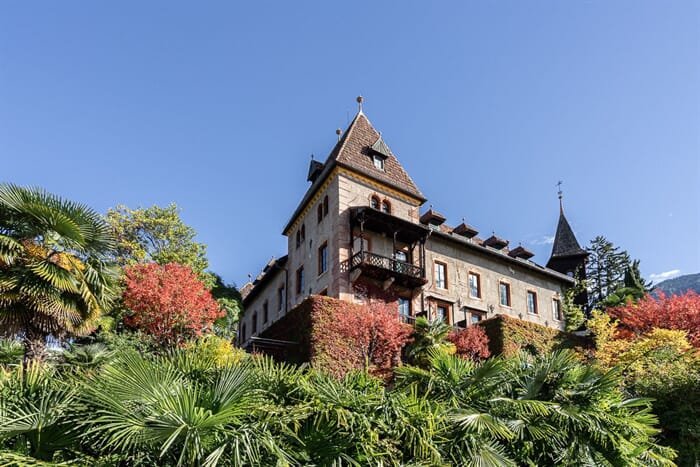
Proud and magnificent, the Labers Castle, first mentioned in a document in 1125, towers above the vineyards of Labers with a unique view of Merano and its surroundings. Where today a new owner family is in the process of awakening the castle from its slumber and reopening it as a B&B hotel from 2020, almost unbelievable things happened during the Second World War:
as part of the "Bernhard" enterprise, the largest counterfeit money operation in history, Schloss Labers served as a logistical headquarters. Thanks to the proximity to Switzerland, the "bomb-free" air and the presence of numerous military attachés in Merano, an SS commando settled in Labers Castle on secret state business in order to distribute counterfeit English pound notes all over the world from here. The sole purpose of this was to fuel inflation in England and thus bring the local economy to its knees.
Even today, numerous legends surround this time at Labers Castle, also fueled by the accidental discovery of thousands of pounds of flowers in the church organ of the nearby St. Valentine's Church in the 1960s.
as part of the "Bernhard" enterprise, the largest counterfeit money operation in history, Schloss Labers served as a logistical headquarters. Thanks to the proximity to Switzerland, the "bomb-free" air and the presence of numerous military attachés in Merano, an SS commando settled in Labers Castle on secret state business in order to distribute counterfeit English pound notes all over the world from here. The sole purpose of this was to fuel inflation in England and thus bring the local economy to its knees.
Even today, numerous legends surround this time at Labers Castle, also fueled by the accidental discovery of thousands of pounds of flowers in the church organ of the nearby St. Valentine's Church in the 1960s.
Witnesses of a disaster
Chiesa Santo Spirito Church
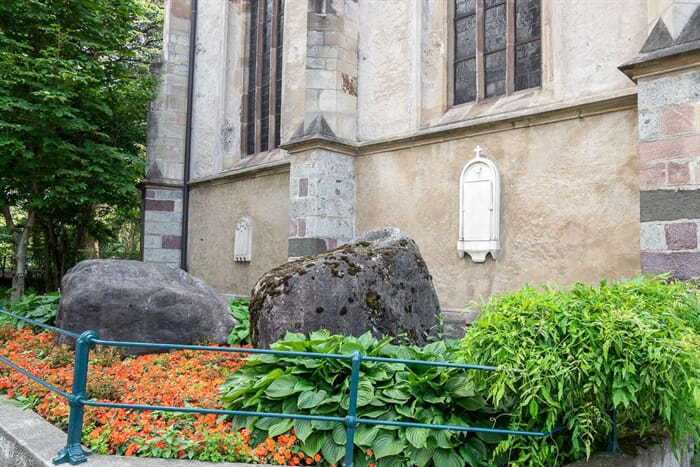
Today, the River Passer winds its way gently and quietly through Meran from the Passeiertal Valley. But it wasn't always that way. In the year 1419, a landslide caused a mudslide at the Kummersee lake in the rear part of the Passeiertal valley; the subsequent flash flood was devastating.
Even today, almost 500 years after this catastrophe, you can still see two contemporary witnesses of this catastrophe from your cars. At the entrance to the city, near the post bridge, coming from Maia Alta, Scena, Tirolo, Val Passiria and Avelengo, you will find on the left, before the traffic lights (almost always red!) the hospital church of the Holy Spirit. Here 2 large porphyry blocks bear witness to the flood catastrophe. These were dragged here on this fateful night and, left as a memorial, have not been moved since.
Even today, almost 500 years after this catastrophe, you can still see two contemporary witnesses of this catastrophe from your cars. At the entrance to the city, near the post bridge, coming from Maia Alta, Scena, Tirolo, Val Passiria and Avelengo, you will find on the left, before the traffic lights (almost always red!) the hospital church of the Holy Spirit. Here 2 large porphyry blocks bear witness to the flood catastrophe. These were dragged here on this fateful night and, left as a memorial, have not been moved since.
The Spanish globe
Villa Freischütz
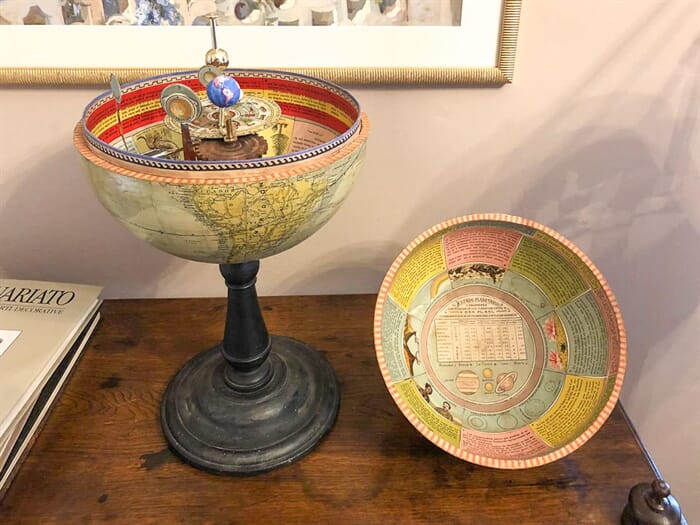
A very rare specimen of a globe from Spanish manufacture is in the Villa Freischütz in Maia Alta/ Merano. From the outside, this globe presents itself as expected - it is an old globe. But this one can be opened, and that's where it gets exciting: Already the inside of the globe is peppered with encyclopedic information about the evolutionary history of mankind, and in the center of the globe is a detailed, mechanical planetarium.
No one knows whether this was created as a scientific instrument or as a children's toy. It is certain, however, that it came into the hands of the art collector Franz Fromm in Barcelona, whose collection has recently been made accessible to the public in the Villa Freischütz Museum, his former residence.
No one knows whether this was created as a scientific instrument or as a children's toy. It is certain, however, that it came into the hands of the art collector Franz Fromm in Barcelona, whose collection has recently been made accessible to the public in the Villa Freischütz Museum, his former residence.
The border to Africa
Gilf Gorge
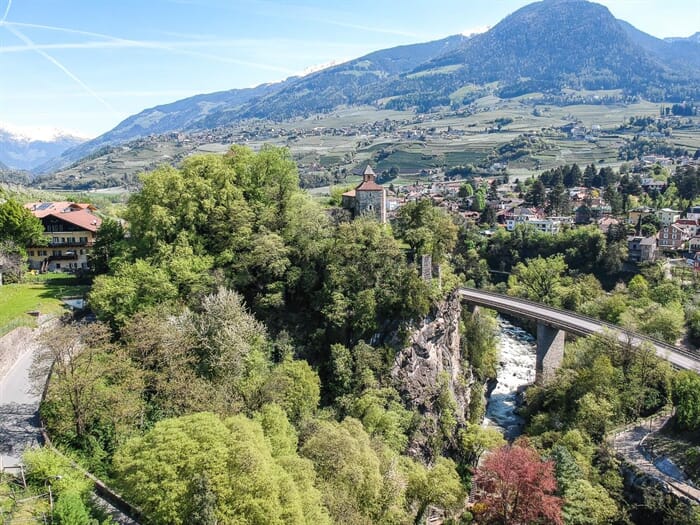
Can you imagine that the southern part of the city of Merano is in Africa, while the northern part is in Europe? But from a geological point of view it is exactly the same! Merano is in fact divided by the Periadratic Line, a geological borderline that stretches from Torino to southern Hungary. Along this line, the African and the European continental plates meet, it being the African continent that has been approaching for about 190 million years.
This border is even very visible, namely on the rocks of the Zeno Castle, which rises above the Gilf promenade. This consists of granite AND gneiss, the two rocks typical of the respective continents.
This border is even very visible, namely on the rocks of the Zeno Castle, which rises above the Gilf promenade. This consists of granite AND gneiss, the two rocks typical of the respective continents.
The promenades: Not always open to all
Passer Promenades

Towards the end of the 19th century, the city of Merano had acquired a brilliant international reputation as a spa town. It was mainly lung patients from all over the world who populated the spa town during their stays of several months, which sometimes brought curious interruptions in the lives of the citizens of Merano.
In 1884, in order to guarantee the nobility a peaceful and relaxing stay at the spa, a "Curpolizei" (police force) took up its duties, which, for example, saw to it that the strict rules of the promenade were observed. Out of consideration for the guests, smoking was not allowed on the promenades at certain times, and women were not supposed to stir up dust with their long skirts and trains. When the crowds were high, only spa guests were allowed to sit on the promenades, and as if this were not enough, only well-dressed locals were allowed on the promenades, and their behavior was not allowed to offend the guests.
And so it went on until the First World War, when many war-wounded were in the hospital town of Merano: a ban on promenades also applied to them, so as not to spoil their stay for the spa guests.
In 1884, in order to guarantee the nobility a peaceful and relaxing stay at the spa, a "Curpolizei" (police force) took up its duties, which, for example, saw to it that the strict rules of the promenade were observed. Out of consideration for the guests, smoking was not allowed on the promenades at certain times, and women were not supposed to stir up dust with their long skirts and trains. When the crowds were high, only spa guests were allowed to sit on the promenades, and as if this were not enough, only well-dressed locals were allowed on the promenades, and their behavior was not allowed to offend the guests.
And so it went on until the First World War, when many war-wounded were in the hospital town of Merano: a ban on promenades also applied to them, so as not to spoil their stay for the spa guests.
The lost prince
Val di Nova
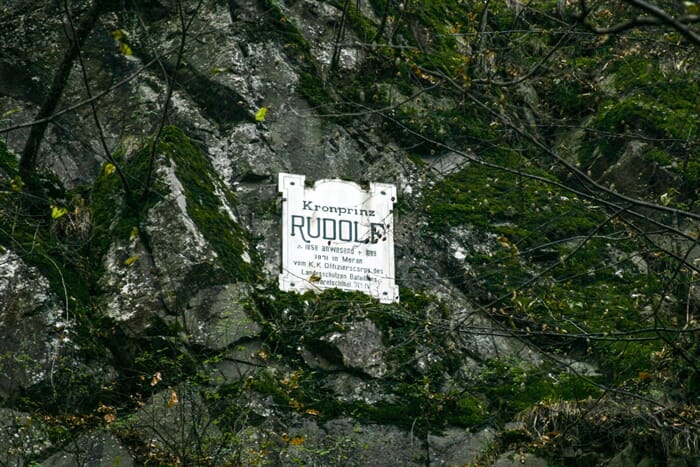
Just above Merano, below the valley station of the Merano 2000 cable car, where the Naif Valley is at its narrowest, a marble plaque set into the rock today recalls a bizarre incident from 1858. On Easter Sunday of that year, the son of Empress Sissi, Prince Rudolf, climbed this steep rock. It is believed that his father was enjoying himself in the hermit's inn and his son wanted to make his way home alone. Fortunately, the farmer's wife Karolina Winkler of the nearby Kiendlhof heard the cries for help from the imperial offspring and rescued him from his predicament at a late hour.
Many years later, the emperor learned of this incident, and in gratitude he gave the farmer's wife a valuable necklace, which is still in the family today. On rare occasions, the necklace can be admired today in the Hotel Kiendl, opposite the rock face.
N.B. This photo of the commemorative plaque dates from 2017. In the meantime, the rock together with the plaque has slipped off, this was - professionally restored in 2020 again installed just below, on the hiking trail.
Many years later, the emperor learned of this incident, and in gratitude he gave the farmer's wife a valuable necklace, which is still in the family today. On rare occasions, the necklace can be admired today in the Hotel Kiendl, opposite the rock face.
N.B. This photo of the commemorative plaque dates from 2017. In the meantime, the rock together with the plaque has slipped off, this was - professionally restored in 2020 again installed just below, on the hiking trail.
Fine dining in the former dungeon
Trattoria Flora
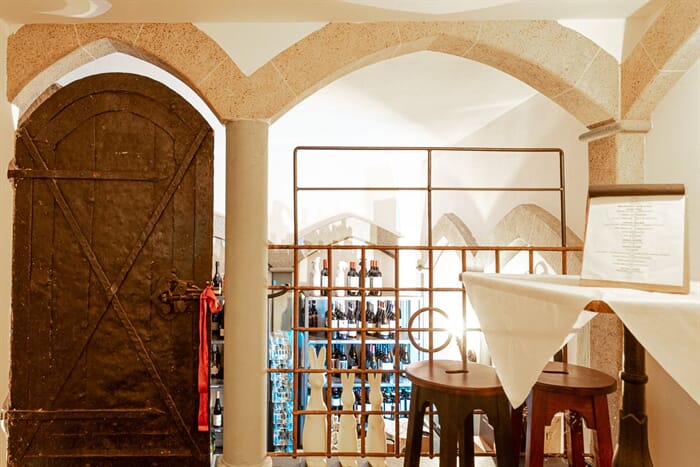
All houses under the Merano Portici look back on a long and eventful history, a touch of medieval history you can still feel today in the Trattoria Flora: in its cellar vaults, where today cozy, winding corners serve as dining rooms of the Flora Restaurant, was the dungeon of the Court of Merano, which occupied the upper floors of the house built in 1400.
In the cells, where in former times the inmates of the dungeon lived their existence, are today e.g. the wine cellar of the house, but also a Koi - carp pond, over which you can dine - separated only by glass plate.
In the cells, where in former times the inmates of the dungeon lived their existence, are today e.g. the wine cellar of the house, but also a Koi - carp pond, over which you can dine - separated only by glass plate.
The hangman's room
Bolzano Gate
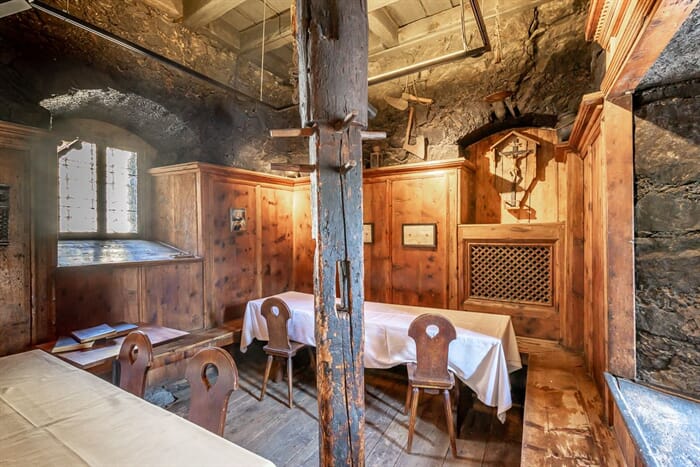
The Bolzano Gate from the 12th century still serves as one of the most important entrances to the old town of Merano. What few people know: inside the Bolzano Gate is a parlor, which with its soot-blackened vault has endured since the darkest Middle Ages.
According to traditional reports, the executioner of Merano resided here for many centuries. Access to the "Henkerstübele" is only available on request through the adjacent Restaurant Sigmund, which was carefully restored a few years ago, whereby many structural elements from the Middle Ages were worked out in the well-known restaurant.
Once you have entered the executioner's parlor, the "tools" of the executioner on the wall, as well as the original death sentences from 1849, will give you goose bumps. On the other hand, the perfectly preserved and functioning turning device in the middle of the room, with which the drawbridge was raised and lowered, will amaze you.
According to traditional reports, the executioner of Merano resided here for many centuries. Access to the "Henkerstübele" is only available on request through the adjacent Restaurant Sigmund, which was carefully restored a few years ago, whereby many structural elements from the Middle Ages were worked out in the well-known restaurant.
Once you have entered the executioner's parlor, the "tools" of the executioner on the wall, as well as the original death sentences from 1849, will give you goose bumps. On the other hand, the perfectly preserved and functioning turning device in the middle of the room, with which the drawbridge was raised and lowered, will amaze you.
A piece of technology history in Hotel Adria
Maia Alta
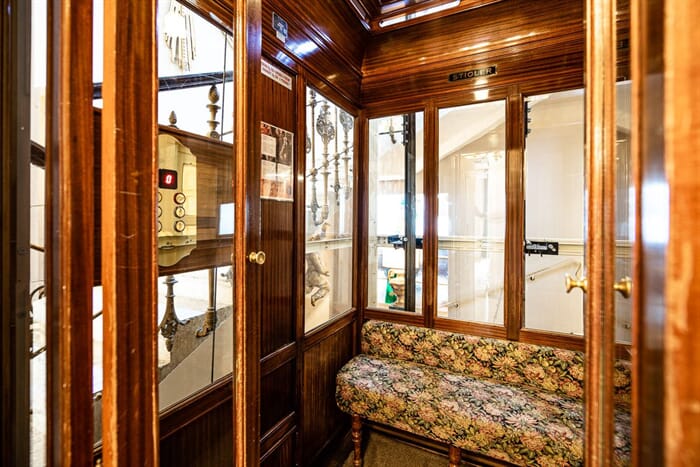
It's hard to believe, but the first electronic passenger elevators went into operation in Europe in the late 19th century. A contemporary witness of this great progress still accompanies hotel guests and employees reliably from the first floor to the upper floors and vice versa - for 105 years now! The Hotel Adria in Obermais is considered a prime example of those few historic hotels in Merano which, thanks to the prudence of their owners, have retained their Belle Epoque charm despite all the necessary modernization. And if you have the privilege of using this elevator with its wooden cabin, glass windows and upholstered bench, the realization quickly sets in that today is far from being better than it used to be. Sure, you still have to close the interior doors yourself, but a mechanical "clack" replaces the horrible buzzing sound of modern elevators once you reach your floor.
For all the nostalgia, "under the hood" is now state-of-the-art technology, says owner Florian Ellmenreich. "The conversion to modern technology about 10 years ago, which was necessary to meet current safety regulations, was ultimately more an affair of the heart than economic action," he summarizes. But the reward for the effort? "It runs and runs and runs without ever having caused a problem. And it has been doing so since 1914!"
For all the nostalgia, "under the hood" is now state-of-the-art technology, says owner Florian Ellmenreich. "The conversion to modern technology about 10 years ago, which was necessary to meet current safety regulations, was ultimately more an affair of the heart than economic action," he summarizes. But the reward for the effort? "It runs and runs and runs without ever having caused a problem. And it has been doing so since 1914!"
Emperor Franz Josef`s pigeons
Maia Alta
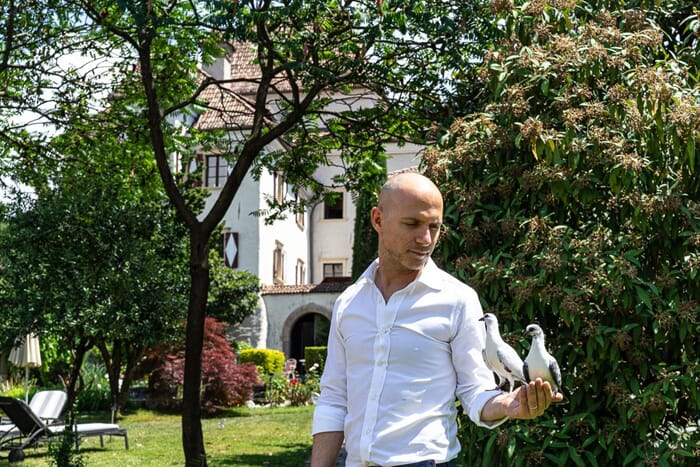
The fact is, Emperor Franz Josef was - get this - a passionate pigeon breeder. His passion went so far that he created a baroque pigeon house at Schönbrunn Castle, which is currently on the verge of being listed as a UNESCO World Heritage Site. The pigeons we are talking about here are Viennese high-flying pigeons. The Viennese high-flying pigeon has nothing to do with those pigeons that populate all cities and even bring some house owners to white heat with their garbage. This pigeon breed climbs up to 2000 meters above ground after the pigeon sting, so called the morning release, stays there up to two hours and then returns to your pigeon loft. The ascent takes place in figure-eight turns, with the changes of rhythm usually happening in waltz time, which makes their flight so graceful. And probably also made the emperor a pigeon lover.
David Kofler (pictured with his pigeons) has been managing the historic Hotel Rundegg in Obermais for 2 years and is well on his way to successfully awakening this hotel, whose Ansitz-like walls date back to the 11th century, from its slumber. In the large park of the hotel he keeps, somewhat hidden, Italy's only pigeon loft with said Viennese high-flying pigeons. As a guest, you can watch these graceful birds and experience the morning "pigeon sting" yourself. Not only for ornithologists an experience, especially if you can enjoy the pigeon flight during breakfast in the open air.
David Kofler (pictured with his pigeons) has been managing the historic Hotel Rundegg in Obermais for 2 years and is well on his way to successfully awakening this hotel, whose Ansitz-like walls date back to the 11th century, from its slumber. In the large park of the hotel he keeps, somewhat hidden, Italy's only pigeon loft with said Viennese high-flying pigeons. As a guest, you can watch these graceful birds and experience the morning "pigeon sting" yourself. Not only for ornithologists an experience, especially if you can enjoy the pigeon flight during breakfast in the open air.
Do you know of any other places in Merano that should be added to this list? I look forward to your email to hello@visitmerano.it!


